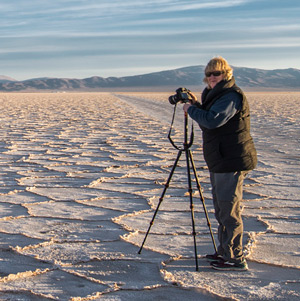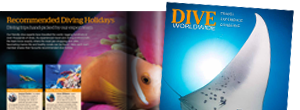Regional Guide to Diving in Indonesia

Indonesia is a vast archipelago and home to some of the finest and most varied diving in the world. Here is our guide to the diving highlights.
Bali
 Divers heading straight for Komodo, Manado or the Lembeh Strait often overlook Bali as a dive destination. But Bali has many diverse dive sites, offering exceptional diving for all levels.
Divers heading straight for Komodo, Manado or the Lembeh Strait often overlook Bali as a dive destination. But Bali has many diverse dive sites, offering exceptional diving for all levels.
Bali has it all! – from protected, shallow bays populated by exotic scorpion fish, octopus and nudibranchs, to exciting drift diving in wild currents with sharks, manta rays and other pelagics; to wreck diving in Tulamben Bay, where reef fish swarm the USS Liberty, and black coral growth is lush.
Menjangan Island is home to a coral reef conservation project in the north-west of the island and just off the east coast lies Nusa Lembongan. This small island is where divers head for manta ray and mola mola encounters (Jul-Oct). This is an incredible opportunity for divers.
Lombok
 Off the north-west coast of Lombok lie three stunning coral islands; Gili Trawangan, Meno and Air. They are blessed with long sandy beaches and clear turquoise waters with extensive colourful reefs, abundant sea life, reef sharks and plenty of turtles, which are popular with snorkellers and divers alike.
Off the north-west coast of Lombok lie three stunning coral islands; Gili Trawangan, Meno and Air. They are blessed with long sandy beaches and clear turquoise waters with extensive colourful reefs, abundant sea life, reef sharks and plenty of turtles, which are popular with snorkellers and divers alike.
Sulawesi
 North Sulawesi lies firmly in the epicentre of marine biodiversity and the Bunaken Marine Park, established 1991, covers an area of some 89,065 hectares, with just 3% comprising the islands of Bunaken, Manado Tua, Nain, Siladen and Montehjage.
North Sulawesi lies firmly in the epicentre of marine biodiversity and the Bunaken Marine Park, established 1991, covers an area of some 89,065 hectares, with just 3% comprising the islands of Bunaken, Manado Tua, Nain, Siladen and Montehjage.
Bunaken is famous for steep, world-class, pristine walls covered with soft corals and sponges, and dive sites suitable for all levels of experience. Large schools of barracuda, moray eels, napoleon wrasse, fairy basslets and sea snakes are common. For the more experienced diver, several varieties of shark, including hammerheads, await at deeper depths. The marine park boasts more than 40 charted wrecks, including a WW II steel-hulled merchant ship.
A holiday here is best twinned with a stay over in Lembeh Strait, dubbed the world’s best muck diving area. Spend hours critter hunting and taking photos of weird and wonderful creatures.
Wakatobi is a Marine National Park comprising an archipelago of four large islands located in south-east Sulawesi and is the second largest in Indonesia. The marine biodiversity and ease of getting to dive sites is fantastic. For sheer reef scenery and marine life variety, you won’t be disappointed with a diving holiday at Wakatobi.
Nusa Tenggara
 Komodo National Park, most famous for its prehistoric dragons, is one of the most magnificent places you’ll ever dive and is best visited by liveaboard. The waters offer an incredible variety of marine habitats and life including critters, sharks, manta rays, dolphin, napoleon wrasse, whales and turtles, and the spectacular landscape is an added bonus.
Komodo National Park, most famous for its prehistoric dragons, is one of the most magnificent places you’ll ever dive and is best visited by liveaboard. The waters offer an incredible variety of marine habitats and life including critters, sharks, manta rays, dolphin, napoleon wrasse, whales and turtles, and the spectacular landscape is an added bonus.
West Papua
 West Papua, Indonesia’s most easterly province and formerly known as Irian Jaya, occupies the western part of the massive island of New Guinea. Lying off the western tip of New Guinea and within the boundaries of the West Papua are the stunning Raja Ampat islands, which offer a diving experience of a lifetime.
West Papua, Indonesia’s most easterly province and formerly known as Irian Jaya, occupies the western part of the massive island of New Guinea. Lying off the western tip of New Guinea and within the boundaries of the West Papua are the stunning Raja Ampat islands, which offer a diving experience of a lifetime.
The region boasts the richest tropical coral reef biodiversity recorded anywhere. Untouched landscapes rivalling those of the Pacific combined with world-class dive sites make these islands the world’s last scuba diving frontier.
Triton Bay lies to the south and is famous for its soft corals whilst Cenderawasih Bay lies to the east of the Bird’s Head peninsula and is renowned for its whale shark population.
Kalimantan
 Due to its remote location this area to the east of Borneo sees relatively few divers, which is why its biggest attraction is still a relative secret.
Due to its remote location this area to the east of Borneo sees relatively few divers, which is why its biggest attraction is still a relative secret.
The uninhabited coral atoll that is Kakaban Island, features a non-stinging Jelly Fish lake, a unique experience for divers! The 5 square kilometre lake is surrounded by a 50-metre ridge, with wall diving featuring schooling barracuda and jacks; leopard, and gray reef sharks and the occasional hammerhead. Neighbouring Derawan (drift and muck dives) and Sangalaki (manta rays) help make this an amazing region for diving.
Ambon
 ’Critters without crowds’ – Ambon Bay is home to some of the best muck diving in the world and a 137 metre long wreck. Ambon's intriguing shoreline has a habit of throwing up the weird and the wonderful, most famously the new species of frogfish discovered by Maluku Divers in 2008.
’Critters without crowds’ – Ambon Bay is home to some of the best muck diving in the world and a 137 metre long wreck. Ambon's intriguing shoreline has a habit of throwing up the weird and the wonderful, most famously the new species of frogfish discovered by Maluku Divers in 2008.
Critters are often seasonal, but many species can be regularly spotted with the help of a knowledgable local. Muck diving in the region has become legendary, and developed Ambon as a must visit destination in Indonesian diving. Saparua, Molana and Nusa Laut are a small cluster of islands to the south of Seram.
Discover more about our Indonesian diving holidays or call us on 01962 302087 to discuss your trip.








